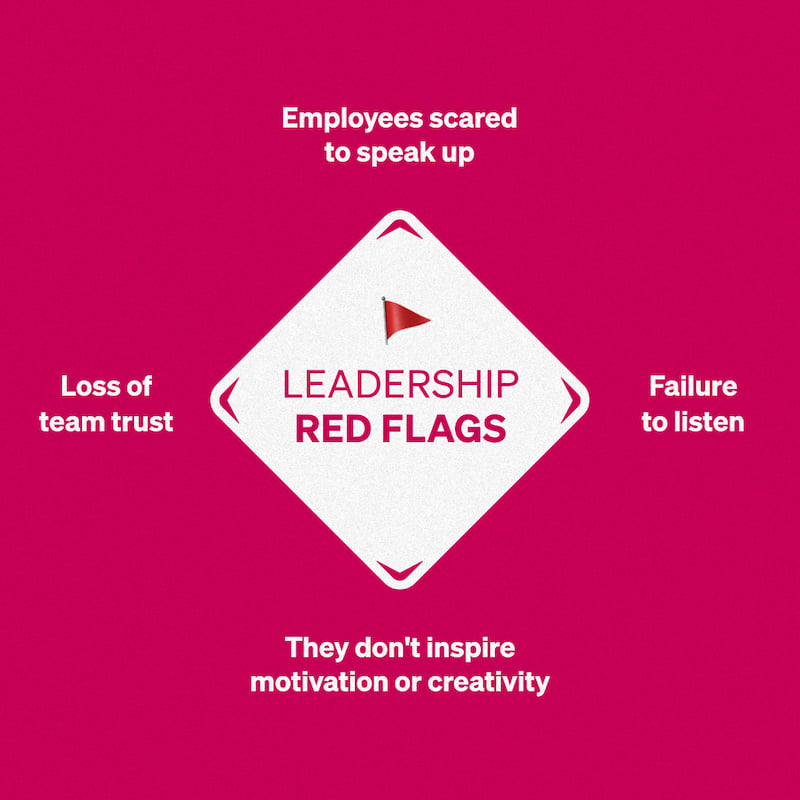Jump to section
What is the impact of losing an employee?
Resources
Daring Leadership Institute: a groundbreaking partnership that amplifies Brené Brown's empirically based, courage-building curriculum with BetterUp’s human transformation platform.
Learn more

Resources
Discover your perfect match: Take our 5-minute assessment and let us pair you with one of our top Coaches tailored just for you.
Find your coach
-1.png)
EN - US
For Business
Platform
Products
Solutions
Customers
Resources
Daring Leadership Institute: a groundbreaking partnership that amplifies Brené Brown's empirically based, courage-building curriculum with BetterUp’s human transformation platform.
Learn more

For Individuals
What is Coaching?
Types of Coaching
Resources
Discover your perfect match: Take our 5-minute assessment and let us pair you with one of our top Coaches tailored just for you.
Find your coach
-1.png)

Companies everywhere are being challenged.
After all, the future of work is rapidly changing. We're all experiencing shocks to the system, like early signs of a recession or economic instability. Companies are navigating political instability, supply chain disruptions, an ongoing global health crisis, and more. As a result, many companies are tightening their purse strings with inflation on the rise.
People are what keep business going. But losing employees — whether they’re quitting or you’re making the difficult decision to lay off your people — is hard.
According to the July 2022 Bureau of Labor Statistics report, losing employees is becoming more common. In fact, 4.3 million people quit their jobs while 1.4 million were laid off or discharged.
Losing employees can be tumultuous for any organization. But in a time where resilience is more important than ever, losing employees can amount to one more shock to the system. At BetterUp, we’re prepared to help your company navigate change and uncertainty, especially in a climate like this one.
Find out the impacts of losing employees on your business. Also, learn what you can do to help cushion the impact of employee turnover — and how to prevent turnover before it becomes a problem.
Before we talk about how to fix your employee retention problem, let’s take a look at the impact. Losing an employee can cause ripple effects in different parts of your business. Here’s how.
We’ll talk more about the high cost of turnover in the section below. But for now, let’s chalk this up to this: it’s expensive. Employee turnover equates to high costs. Recruiting top talent costs money. Onboarding costs money. Posting job descriptions across job boards cost money. Finding the best talent for a competitive annual salary costs money.
The cost of employee turnover can dig deep into your organization’s pockets. When an employee leaves, expect some budget to go with them.
We know connections at work matter. When employees aren’t connected to others in the workplace, the business suffers. Our recent data shows that employees without connections have a 313% stronger intention to quit and have a 176% likelihood of seriously job seeking. Sadly, 43% of people don’t feel connected to the people they work with every day.
So when connections are abruptly jilted due to losing an employee, it’s no wonder that employee engagement will suffer. Gallup has found that only 21% of employees are engaged at work.
Organizations have plenty to lose with a majority of their workforce likely already unengaged. A dropping retention rate also risks a dipping employee engagement, which spirals into other aspects of your business.

When employees leave, it risks hurting your employee morale and company culture. A strong company culture has high employee morale, one where people genuinely enjoy working with one another.
When any great employee leaves, it can cause shifts within the team. In fact, there’s some science to the idea that quitting is contagious. When employees quit, it can negatively impact your company culture.
Losing employees has a ripple effect across the business. If you haven’t noticed, we’re progressing in impact as the effects often pile up on one another.
Once employee engagement, company culture, and employee morale suffer, so does productivity. You might see things like increased burnout or a suffering employee experience as a result of this.
Lastly, all of these factors lead to one key impact: your business’ performance will suffer. The impact of losing employees culminates into this sort of snowball effect.
When cost, lack of engagement, lack of morale, and lack of productivity get together, it leads to poor business performance.
The cost of employee turnover is a heavy financial burden. As promised, let’s dig into the numbers behind losing employees.
Because employee turnover bleeds into different parts of the business, your organization can be paying for it in more ways than one.
First, let’s talk about the employee engagement factor. We turned to Gallup and its recent 2022 State of the Global Workplace Report. According to the report, unengaged employees cost the world $7.8 trillion in lost productivity. Employee engagement is a key factor in preventing the financial burden of turnover.
In fact, organizations that saw good employee engagement saw lower turnover. Gallup reported 43% lower turnover rates in workforces with engaged employees.
Now, let’s talk about the dollars associated with recruiting and compensation costs. Gallup also looked closely at the financial cost associated with replacing a simple employee. It’s estimated (conservatively) that replacing one employee can cost anywhere from one-half to two times the employee’s annual salary.
Let’s look at an example provided by Gallup. Let’s say you run a 100-person organization that shells out an average salary of $50,000. Calculating the cost of turnover, you could be paying anywhere from $660,000 to $2.6 million per year.
So, we know employees are leaving. Even in a slowing economy, people are still quitting their jobs. And beyond voluntary departures, we know some organizations are experiencing budget constraints. Layoffs are happening, which can cause tension, stress, and uncertainty among your employees.
So, why is this happening? Why are companies losing employees now? Here are four reasons why — and what you can do about it.
The pandemic spurred people everywhere to examine their priorities. For many people, it came down to finding the purpose behind their work.
If employees don’t connect their work to their larger purpose, you risk losing them. Some of your best employees may not know why their work matters.
What you can do: To start, communicate. Oftentimes, there’s a connection to the larger purpose of work. But your employees need to understand the “why” behind the “what” — and that starts with communication.
You can also help your employees live with greater purpose, clarity, and passion through coaching. With BetterUp, tap into the full potential of your workforce.
We’ve all seen the news cycles. Perhaps your organization has been a part of the layoffs happening in response to the current job market. Or maybe, you’ve lost your job and are looking for your next opportunity.
Companies everywhere are tightening their budgets. Organizations are looking for ways to do more with less, which starts with building a resilient, flexible workforce.
What you can do: Upskill and develop your top talent. It’s likely that many of your employees are wearing many hats. More than ever, your workforce could be stretched in different directions. Your employees might be weathering change while also balancing priorities and flexing into new roles.
With BetterUp, you can invest in the future-mindedness of your employees. Equip your employees with a virtual coach. By doing so, you can help your employees focus on their skills — and identify what skills they need to grow. As a result, you’ll see your workforce dig into what matters most during this moment.

A new Pew Research Center survey found some commonalities behind the employees who abandoned their jobs during the Great Resignation. The survey reported low pay, a lack of opportunities for advancement and feeling disrespected at work are the top reasons why Americans quit their jobs last year.
Career development and development opportunities remain a key reason why employees are leaving. If you breed micromanagers that prevent growth, you risk losing them. If you’re not investing in ways to develop your talent, you risk losing them.
What you can do: Invest in your employees’ development. With BetterUp, you can provide personalized development opportunities for your employees. By working one-on-one with a coach, you can ensure your employees are growing within your organization.
Are you promoting career mobility? Are you fostering a work environment where internal career growth is encouraged? How are you making sure team members are aware of your organization’s growth trajectories?
Along the lines of finding purpose, some employees have realized what they truly want to do with their lives. Some want better work-life balance and working conditions, scaling back hours, or prioritizing caregiving responsibilities.
Others want to pivot their careers altogether and follow their dreams. For example, I personally know two colleagues from a previous company who decided to start their own small businesses. They decided they didn’t want to continue to climb the corporate ladder and wanted to find a way to work for themselves.
And some just need to take time for a well-deserved career break. Nearly every time I’m scrolling through LinkedIn, I see a connection posting about taking a career pause. It’s becoming more and more common, especially after suffering from the effects of burnout, to simply press pause for a while.
What you can do: Support them. We know this doesn’t sound intuitive. You don’t want your employees to leave. And of course, any loss is hard on a manager, your team members, and the business.
But here’s the other thing: boomerang employees are coming back in full force. The working world is smaller than we think. And at the helm of everything are connections. Let’s look at the example Adam Grant, BetterUp Science Board Advisor and organizational psychologist, has set.
"The more I help out, the more successful I become. But I measure success in what it has done for the people around me. That is the real accolade."
Adam Grant, BetterUp Science Board Advisor, organizational psychologist
Sure, we have reactive ways to address employee attrition. But how can you prevent rapid turnover from day one? Here are five retention strategies that can help you get ahead of the problem:

Losing employees is something that every organization goes through.
But how you deal with losing employees is up to you. And the initiatives you put into place to help prevent turnover matter.
If you’re not sure where to start, consider BetterUp. Together, we can unlock your workforce’s full potential. And together, we can empower your organization to thrive in uncertainty and change.
Understand Yourself Better:
Big 5 Personality Test
Learn how to leverage your natural strengths to determine your next steps and meet your goals faster.Understand Yourself Better:
Big 5 Personality Test
Learn how to leverage your natural strengths to determine your next steps and meet your goals faster.Madeline is a writer, communicator, and storyteller who is passionate about using words to help drive positive change. She holds a bachelor's in English Creative Writing and Communication Studies and lives in Denver, Colorado. In her spare time, she's usually somewhere outside (preferably in the mountains) — and enjoys poetry and fiction.
Platform
Products
Solutions
Customers
What is coaching?
Types of Coaching
Resources